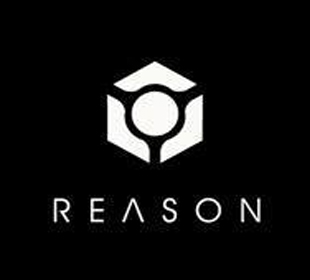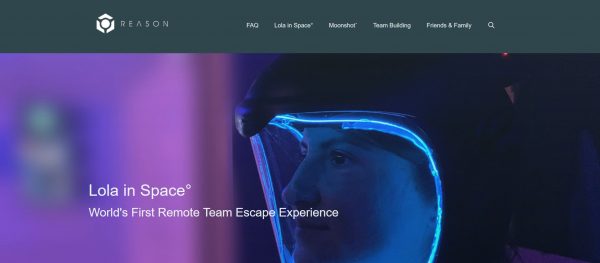RATING: 4 Keys RESULT: Win REMAINING: 14:48
♪ ♫ Her name was Lola. She was a Spacegirl. With a helmet on her hair and a spacesuit down to there. ♪ ♫
Lola in Spaceº is a remote play experience using portions of a physical escape game at the the Reason’s brick and mortar location. This game, however, is designed specifically to be offered as a live, online experience only.


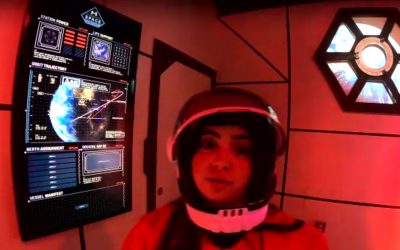 Lola is trapped in the supply module on the International Space Station while Mission Control in Houston is down. Can your team get in touch and help Lola escape?
Lola is trapped in the supply module on the International Space Station while Mission Control in Houston is down. Can your team get in touch and help Lola escape?
As an escape game built entirely around the emerging concept of remote play, Lola in Spaceº goes beyond directing a proxy in a brick-and-mortar game. Lola is a living, breathing character that brings this storyworld to life.
From the moment players are greeted by Lola as they connect to her video feed, they’re already in the supply module. There is no “outside the room greeting” or rules video. Instead, Lola gives players a rundown of what she has and hasn’t tried; the important items she’s noticed; and where she believes they should begin. This evokes a sense of realness in Lola, as it’s obvious she has real stakes in this mission and failure could be the difference between life and death. For her, of course.
Accordingly, Lola is a part of the team. While players are there to direct her, it isn’t out of place when she turns the tables and directs them, pointing out areas they might have missed or suggesting what might be the next best step towards aiding her escape. Lola acts as a teammate, friend, and clue system all rolled into one, and her personality quirks and occasional jokes are a welcome addition to the game.

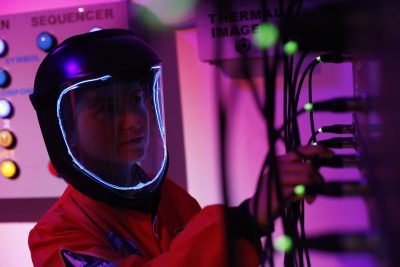 As an escape game built for remote play, Lola in Spaceº makes great use of the area to further the game’s design. While the overall decorum might not quite compare with many of the brick and mortar games we’ve previously reviewed, in this case many of the scenic choices feel appropriately made for a remote play setting and take into account the limitations players at home might have.
As an escape game built for remote play, Lola in Spaceº makes great use of the area to further the game’s design. While the overall decorum might not quite compare with many of the brick and mortar games we’ve previously reviewed, in this case many of the scenic choices feel appropriately made for a remote play setting and take into account the limitations players at home might have.
Many of the elements necessary to Lola’s survival are clearly labeled and easily visible from the broadcast camera, a welcome change that keeps players fully immersed in the environment rather than tabbing back and forth between room diagrams and the game itself.
Quintessential spacecraft elements, such as flashing buttons that might have catastrophic consequences if pressed, stark white walls, and even a window looking down on Earth make this environment unmistakably a drifting space station floating through the great unknown.

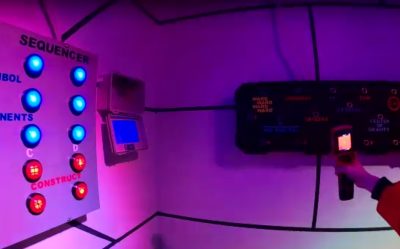 Oftentimes when playing an escape game, players might find that one or two members of the team take the lead while the others follow. Lola in Spaceº has a great mix of puzzles that each catered to different members of our team. Some of these tasks required keen observation and logic, while others demanded a more creative mind, although there could be arguments made about how well some of these puzzles fit the overall theme.
Oftentimes when playing an escape game, players might find that one or two members of the team take the lead while the others follow. Lola in Spaceº has a great mix of puzzles that each catered to different members of our team. Some of these tasks required keen observation and logic, while others demanded a more creative mind, although there could be arguments made about how well some of these puzzles fit the overall theme.
The game’s linear design lends itself well to the remote play structure, and allows teams to work together on tasks that truly feel like they’d be too much for a single person to handle.
This allows Lola’s camera to be fixed in place until each puzzle is complete without players needing to worry about searching for objects in obscure places which, while fun to do in a brick and mortar escape room, becomes tedious quite quickly thousands of miles away.

While live actors in escape games haven’t exactly been a common theme, they almost feel necessary for games being run remotely. Lola in Spaceº answers that need by upgrading your game master from a normal person in street clothes to a spacesuit and helmet wearing character who truly feels like part of the team. We were pleasantly surprised to find that our game began in the game itself, rather than a hallway outside a generic door. These few items, while small, immerse players into the game’s story world and make it all the more real.
True to form, Lola acts as your teammate and has very real stakes in your success. As such, she does a lot of the leg work for you by not only giving a tour of her location upon the game’s start, but also by pointing out objects and places of interest and suggesting where teams should start. The linear puzzle track compliments the game’s design while still leaving plenty to do, although some puzzles lean dangerous close to breaking the game’s illusion. Despite these shortcomings, however, we can certainly say that our time spent with Lola was memorable and fun. With some polish and refinement, we’re sure Lola in Spaceº could truly be out of this world!

There’s one phrase that we’ve used in these past few weeks more times than our team has collectively uttered in our lifetimes: uncharted waters. It truly applies to much of the world around us in these uncertain times, but, perhaps in a sense even more so to the new genre of remote play escape games. Suddenly, it doesn’t matter if you’ve played ten, fifty, a hundred, or five hundred different escape games. When entering this new digital world, we’ve all, in effect, been reset to one. Everything you think you know – every strategy that you’ve learned along the way – in a sense, is wrong. Truly, these are uncharted waters.
It is possible that some experienced players may initially find frustration in a remote play environment; our advice is take a breath and stick with it. It’s critically important to remember that together, we’re all essentially learning a brand new skill set. Just as venues are learning how to even run a brick and mortar game remotely over the internet, we, the players, have to be patient and essentially learn how to play them.
Try to think back to your first real escape game experience. Try to forget everything you know from dozens – or even hundreds – of games that you may have played since. On that first game, none of us instinctively knew to gather all of the evidence – each found object – into a single centralized location to begin analyzing how they may connect with the environment around us. None of us instinctively knew to immediately survey the room from top to bottom to take inventory on what types of codes we need to solve for, or how many keys we might need to obtain. All of these things that are, today, simply second nature to experienced players were learned skills that we’ve each developed through experience. With remote play games, we need to develop a whole new set of skills and learn to play differently.
A few protips we’ve quickly learned are to use your personal home environments to the best of your abilities while playing a remote game. Do you have multiple monitors on your computer? If so, cast one as your live video feed of the room, with a second as a window solely to display clues, items and vital objects found in digital form. Keep your tabs organized; try to rearrange them so that like objects sit next to each other across the top of the browser, making them easier to locate quickly. To the same point, keep your work space “clean” by closing tabs of any completed or used items, in an effort to limit what’s left in front of you. Perhaps the best method we’ve found, though, admittedly won’t be as readily available to all players. Do you have Adobe Photoshop, or a similar graphic design program on your personal computer? If so, we recommend copy/pasting all of these digital assets onto a single work space. Although this takes a few minutes to organize up front, once implemented, it allows remote players the ability to see everything side by side, in scale, to compare each object exactly as they would in a brick and mortar experience.
Escape games have always been about thinking outside the box, problem solving and finding solutions in often unexpected ways. With this new genre of remote play games, that notion has never been more true. One could debate the merits of playing physical games versus remote experiences – but at the end of the day, the simple fact is that they are different. Is one better than the other? Maybe – but the key is they are different in such a way that they each are an enjoyable experience. And for now, this new genre of the industry offers the one thing we truly need most: an escape from reality around us, to “gather” safely with our closest friends. But this time, we get to do it no matter where they may be in the world, joined in a common experience that brings us all together in a way that, before today, was never even possible.
Show your support for Escape Authority and get social with us:

Venue: Reason
Location: Remote online play at home, broadcast live from San Francisco, California
Number of Games: 3
GAME SPECIFIC INFORMATION:
Duration: 60 minutes
Capacity: 8 people
Group Type: Private / You will not be paired with strangers.
Cost: $30 per person (minimum 5)

We thank Reason for inviting us to play this game. Although complimentary access was generously provided, that in no way impacts the opinion included within this review.











